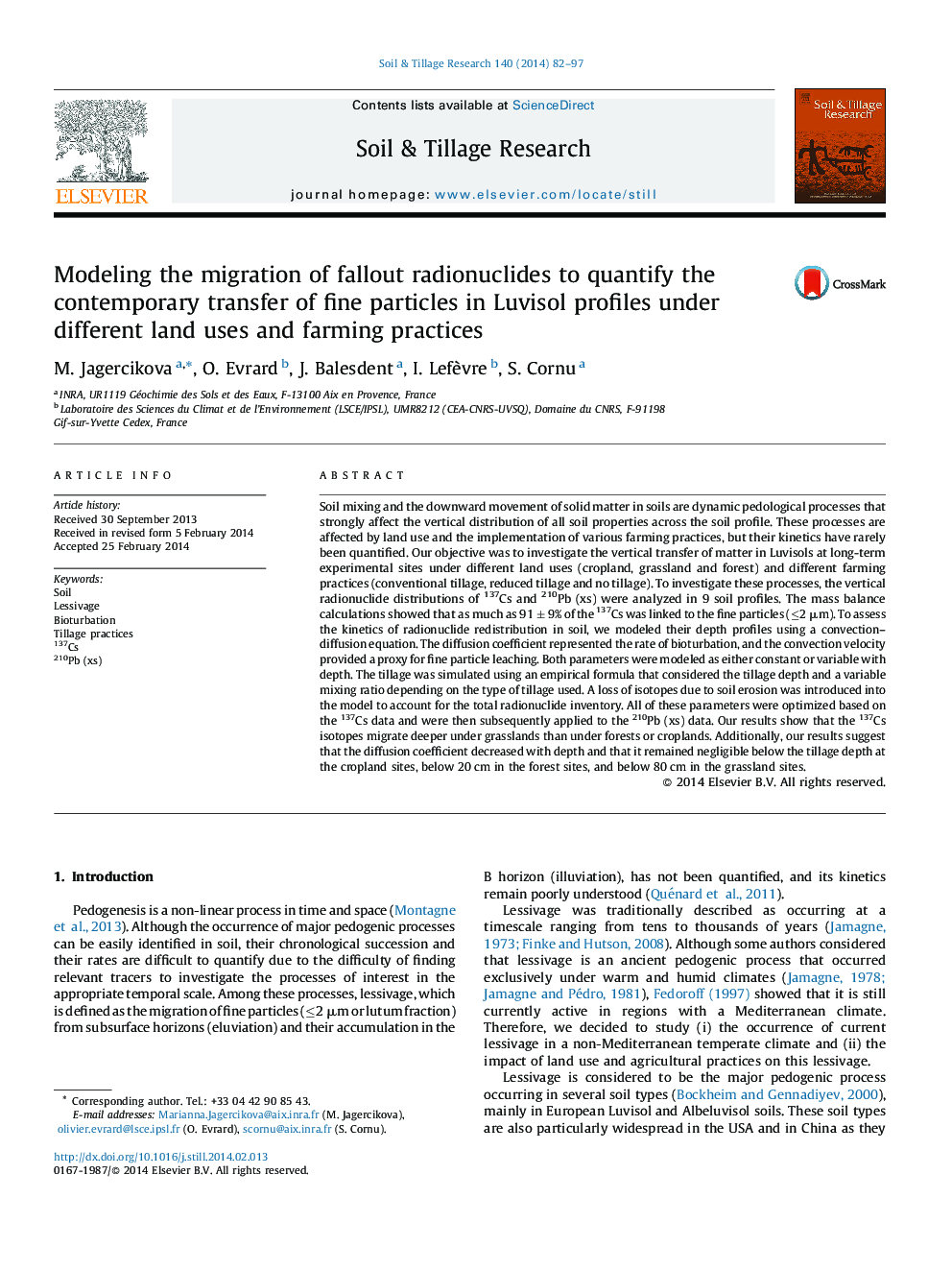| Article ID | Journal | Published Year | Pages | File Type |
|---|---|---|---|---|
| 305748 | Soil and Tillage Research | 2014 | 16 Pages |
•We quantified the kinetics of vertical solid matter transfer in nine soils.•Convection–diffusion equation with depth dependent parameters was used.•Cultivation reduced bioturbation and clay eluviation when compared to grassland or forest.•Reduced tillage decreased clay eluviation when compared to conventional tillage.
Soil mixing and the downward movement of solid matter in soils are dynamic pedological processes that strongly affect the vertical distribution of all soil properties across the soil profile. These processes are affected by land use and the implementation of various farming practices, but their kinetics have rarely been quantified. Our objective was to investigate the vertical transfer of matter in Luvisols at long-term experimental sites under different land uses (cropland, grassland and forest) and different farming practices (conventional tillage, reduced tillage and no tillage). To investigate these processes, the vertical radionuclide distributions of 137Cs and 210Pb (xs) were analyzed in 9 soil profiles. The mass balance calculations showed that as much as 91 ± 9% of the 137Cs was linked to the fine particles (≤2 μm). To assess the kinetics of radionuclide redistribution in soil, we modeled their depth profiles using a convection–diffusion equation. The diffusion coefficient represented the rate of bioturbation, and the convection velocity provided a proxy for fine particle leaching. Both parameters were modeled as either constant or variable with depth. The tillage was simulated using an empirical formula that considered the tillage depth and a variable mixing ratio depending on the type of tillage used. A loss of isotopes due to soil erosion was introduced into the model to account for the total radionuclide inventory. All of these parameters were optimized based on the 137Cs data and were then subsequently applied to the 210Pb (xs) data. Our results show that the 137Cs isotopes migrate deeper under grasslands than under forests or croplands. Additionally, our results suggest that the diffusion coefficient decreased with depth and that it remained negligible below the tillage depth at the cropland sites, below 20 cm in the forest sites, and below 80 cm in the grassland sites.
